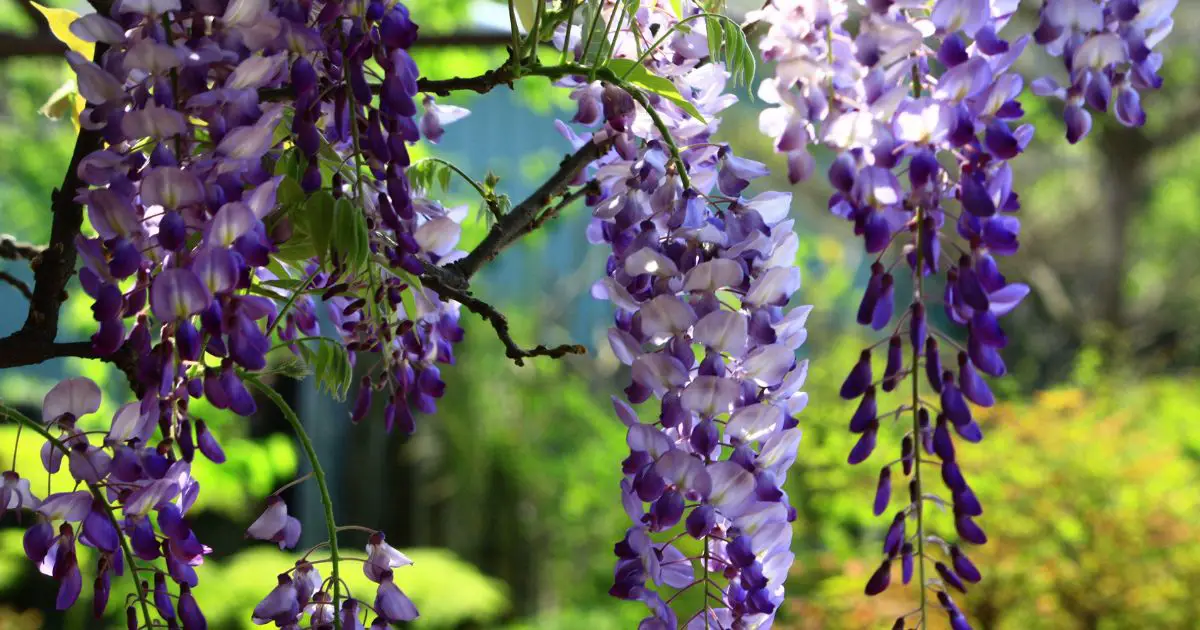Major causes of wisteria bonsai not blooming are nutrient deficiency/excess nitrogen, insufficient sunlight, improper temperature, pruning mistakes, and incorrect watering practices.
Why isn’t your wisteria bonsai blooming?
If you’re wondering why your wisteria bonsai isn’t blooming as expected, there could be a few reasons behind it. Understanding these factors can help you address the issue and encourage your bonsai to bloom beautifully.
Nutrient Deficiency/ Excess Nitrogen
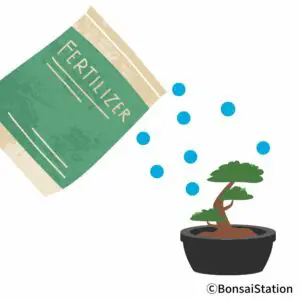
Nutrient deficiency
If your wisteria bonsai is not blooming, a nutrient deficiency could be a contributing factor. Wisteria is a plant that needs abundant nutrients for flowering compared to other plants.
Here are some potential nutrient deficiencies that might be affecting blooming.
Phosphorus and potassium deficiency
Insufficient phosphorus and potassium can lead to poor flower formation for any bonsai trees including wisteria.
Phosphorus supports the transfer of energy throughout the tree for root development and flowering. Potassium is essential for photosynthesis and regulates many metabolic processes required for flower (and fruit) development.
Deficiencies in these nutrients can lead to fewer and underdeveloped flowers. It impacts the overall quantity and quality of blossoms, ultimately diminishing the blooming potential of your tree.
Calcium deficiency
A calcium deficiency can also lead to yellowing leaves, especially in a wisteria bonsai, which can result in less blooming.
Calcium is essential for cell wall development and structural integrity in plants. When calcium is deficient, it can result in tip burn or whole leaves turning yellow. As plants make energy through photosynthesis using the green pigment in leaves (chlorophyll), yellowing leaves lead to less energy production, resulting in reduced flower production.
This usually happens during the growing season when the tree needs calcium for growth.
Magnesium deficiency
Magnesium is a component of chlorophyll (the green pigment) and plays a vital role in photosynthesis. Its deficiency can cause yellowing between the leaf vein thus in poor and stunted growth.
This, again, isn’t good for blooming because your bonsai has to store a lot of energy for flower bud development and blooming.
Excess nitrogen
Excess nitrogen can lead to reduced flowering in any flowering bonsai. With an excessive amount of nitrogen, trees tend to allocate more resources to foliage production rather than flower formation, though nitrogen is essential for healthy plant growth and foliage development.
Giving excessive nitrogen is especially problematic for wisteria bonsai because wisteria has the ability to fix nitrogen from the air through its symbiotic relationship with bacteria in its roots. These bacteria help provide a significant portion of the tree’s nitrogen needs by converting atmospheric nitrogen into a usable form.
As a result, wisteria bonsai has a relatively lower requirement for additional nitrogen fertilization compared to trees that lack this nitrogen-fixing ability. Giving nitrogen-rich fertilizer, which is usually recommended for bonsai trees, may well lead to less flowering for wisteria bonsai.
Insufficient Sunlight
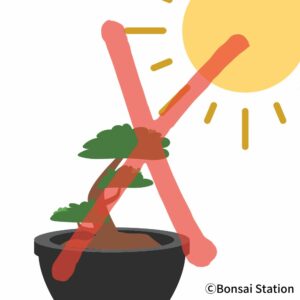
One of the primary reasons why your wisteria bonsai is not blooming may be due to insufficient sunlight. Wisteria is a sun-loving tree: it requires plenty of sunlight to trigger the blooming process.
Wisteria bonsai light needs
Wisteria bonsai needs a minimum of six hours of direct sunlight each day and preferably full sun all day. It can survive in partial shade but with much less or possibly no flowers.
Improper Temperature

Temperature plays a significant role in flower formation as each species has an optimal temperature range for flower initiation and development. If your wisteria bonsai is not blooming as expected, improper temperature conditions could be a contributing factor.
Wisteria bonsai temperature needs
According to research, temperatures around 68°F (20°C) are optimal for wisteria flower bud initiation. For healthy bud development, the temperature needs to drop to around 60°F (15°C).
At temperatures above 77°F (25°C), wisteria flower buds may not develop at all.
Pruning Mistakes
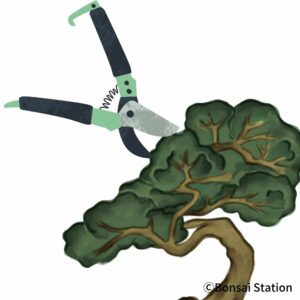
Pruning mistakes can have a significant impact on the flower production of your wisteria bonsai. Pruning at the wrong time is the most common pruning mistake in wisteria bonsai that interfere with blooming.
Pruning at the wrong time
Wisteria flower buds initiate just after flowering, from late May to June depending on the species. Pruning during this period will likely remove some or most of the flower buds for the next season.
Incorrect Watering Practices
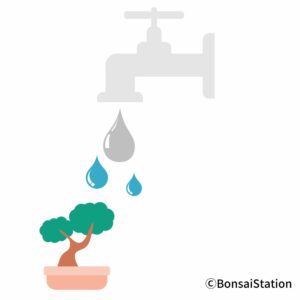
Watering is a fundamental aspect of bonsai care, and improper watering practices can significantly impact their blooming potential.
Wisteria bonsai loves water and is prone to water stress. It can run out of water pretty fast and its roots get damaged even if you think you water it enough.
That said, excess watering especially at the time of flower bud formation in late spring to early summer can promote vegetative growth (i.e. leaf and stem) rather than flower buds. Mild drought stress (slight wilting of leaves) at the flower bud initiation period can in fact promote more numbers of flower buds, leading to higher blooming rates.
It is probably best if you understand what the flowering process is for bonsai trees and how it proceeds to identify the reason why your wisteria bonsai isn’t flowering. For this, the following article may be helpful.
How to make wisteria bonsai bloom

Fertilizing for Blooms
The nutrients you provide play a fundamental role in shaping the tree’s health, vitality, and ability to produce captivating blooms you’re eager to see.
Choose the right fertilizer
Pay special attention to the amount of phosphorus in fertilizer, a nutrient that is paramount for flower development. Choose a fertilizer with a higher middle number in the N-P-K ratio, indicating a significant phosphorus content.
The following product from Amazon is a slow-release bonsai bloom fertilizer with an N-P-K ratio of 6-8-10 and is perfect for your wisteria bonsai.
Growing season feeding
If you notice yellowing leaves, provide your wisteria with calcium and magnesium. For this, dolomite lime is the best because it is a natural rock that contains high levels of calcium and magnesium.
Dolomite Lime Soil Amendment Fertilizer
Make sure not to provide fertilizer with a higher nitrogen ratio during the active growing season in spring and summer. As a bean family tree, wisteria has the ability to fix nitrogen from the air through its symbiotic relationship with bacteria in its roots. Excess nitrogen may lead towards foliage production rather than flower formation.
Provide optimal light conditions

Wisteria is a sun-loving tree. Place your bonsai where it can receive sunlight throughout the day. Outdoor bonsai like wisteria generally require direct sunlight for at least 6-8 hours per day.
Wisteria bonsai is fairly resistant to strong summer sunlight as well. Unless you think the risk of water shortage is high, you can leave your wisteria bonsai under full sun even in summer.
On the other hand, I wouldn’t recommend growing your wisteria bonsai indoors. Lack of adequate sunlight may likely cause less blooming or not at all.
Maintaining the Right Temperature Range
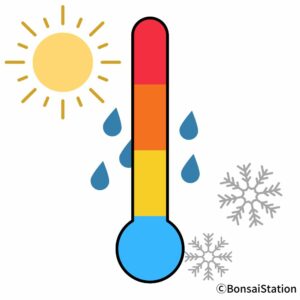
Wisteria bonsai temperature needs
Temperatures around 68°F (20°C) are optimal for wisteria flower bud initiation. The development of flower buds is suppressed with temperatures higher than 77°F (25°C). The optimum temperature range for wisteria flower bud development is around 60°F (15°C).
Winter cold
A certain degree of low-temperature exposure in winter is necessary for wisteria bonsai for normal flowering. The temperature has to be at least below 50°F (10°C).
During winter, their growth and blooming activity slow down or temporarily cease. This is a natural part of their life cycle and they resume as temperatures become more favorable in spring. Your wisteria bonsai needs exactly this for spring bloom.
Pruning for Flower Production
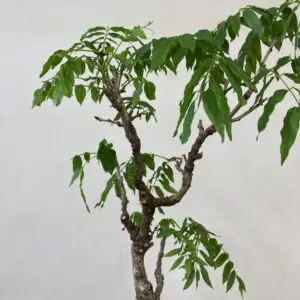
My wisteria bonsai after pruning.
Skillful pruning not only contributes to the bonsai’s aesthetic appeal but also plays a pivotal role in encouraging the formation of flower buds.
Timing for pruning
The best time for optimal wisteria bonsai blooming is right after flowering. After your wisteria bonsai has finished blooming for the season, perform post-bloom pruning to maintain its shape and encourage fresh growth. Remove spent flowers and trim back any excessive growth to redirect the tree’s energy towards budding for the next flowering cycle.
Wisteria flower buds initiate just after flowering, from late May to June depending on the species. Pruning later than this period may cut off flower buds for the next year, though after summer flower buds are already visible and recognizable.
Pruning should be done thoughtfully and with precision. Avoid pruning during periods when your bonsai is setting buds as this could disrupt the blooming process.
Mastering Proper Watering Techniques
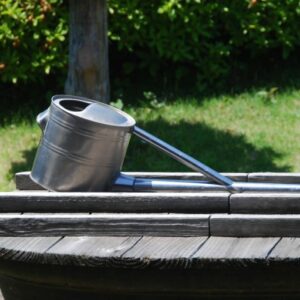
Wisteria bonsai water needs
Wisteria bonsai loves water and is vulnerable to water stress.
Watering frequency for abundant blooming
It is generally recommended to water wisteria bonsai 1-2 times in spring, 2 to 3 times a day in summer, and back to 1 to 2 a day in fall depending on the climate (temperature, humidity, and wind).
Mild drought stress at the flower bud initiation period can promote more numbers of flower buds. Avoid keeping the soil consistently wet and water thoroughly when it is dry.
—–
References
五井正憲. (1982). 温帯花木の花芽形成ならびに開花調節に関する研究. 香川大学農学部紀要, 38, 1-120. (Goi, Masanori. (1981). Studies on the flower formation and forcing of some ornamental trees and shrubs native to East Asia, Kyoto University.)

